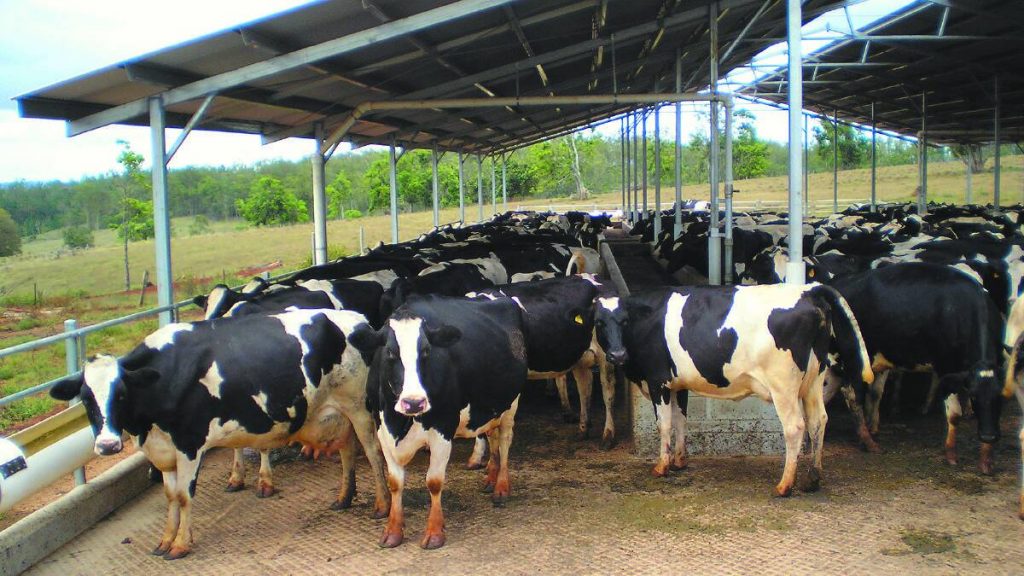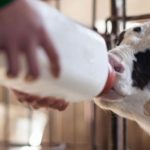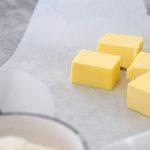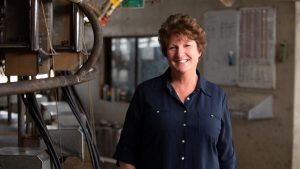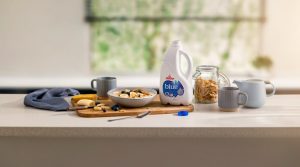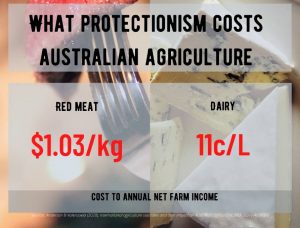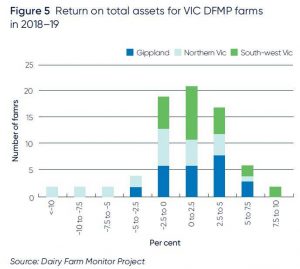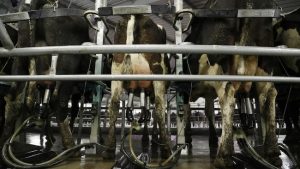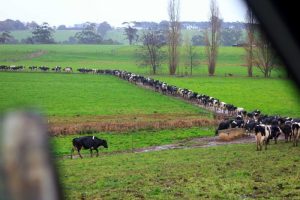
ENTERING summer is a good time for dairy farmers to assess their heat stress management programs as heat stress can impose a significant financial and welfare cost on a business.
Heat stress has been shown to decrease milk yield by 10-25 per cent, feed intake by 10-20pc, decrease in the six-week and 100-day in-calf rates, drop conception rates, and increase the risk of clinical mastitis in high yielding cows.
The conditions under which a heat stress event occur can be complex. They can combine the climatic factors of temperature, humidity, wind speed, and sunlight with an animal’s characteristics of breed, feeding, stage of milk production and health status.
The Temperature Humidity Index (THI) in Table 1 shows how temperature and relative humidity impact cattle heat stress and therefore a cow’s performance.

The table shows the simplified THI; for a detailed THI visit www.publish.csiro.au/ebook/chapter/9781486306473_Appendix_01.
Cattle try to maintain a stable core body temperature through increased water intake, panting, sweating and behavioural changes. If these mechanisms cannot reduce body temperature below acceptable levels, this is when heat stress will occur.
Cow behaviour is a dominant indicator of heat stress progress and a cow goes through the following progression when experiencing heat stress:
- Shade seeking.
- Increased standing.
- Decreased dry matter intake.
- Crowding water troughs.
- Increased water intake.
- Bunching to seek shade from other cattle.
- Changes to or increased respiratory rate.
- Immobility or staggering.
To manage the impact of heat stress the following actions can be taken when a high heat day is expected:
- Use low-stress stock handling techniques; this helps reduce physical body heat.
- Delay afternoon milking until 5pm.
- Wet the dairy yard an hour before cows arrive.
- Use yard sprinklers, which encourage heat loss and are an effective method of cooling mobs of cows quickly. Aim for a moderate to large water droplet. Use on/off cycle, sprinkle cows for 1-3 minutes every 15 minutes. If there is no shade on the farm, bring the milking herd back to the dairy yard around midday and use the sprinkler system to cool cows.
- During hot weather cows can drink 200-250 litres per cow per day. Install a large water trough on the exit side of the dairy.
- Place fans above sprinklers and tilt them down 20-30 degrees, so they blow air between and underneath cows to enhance whole-body cooling.
- Provide cows with the highest quality pasture available to graze overnight when they are cooler.
- Importantly, if affected animals show no signs of improvement contact a veterinarian for assistance.
In the long term, the following actions can be considered to manage heat stress for the benefit of the business and also to ensure the welfare of cattle:
- Review or undertake a whole farm plan including the placement of shade structures and tree plantings on northern and western edges of pastures – trees can reduce the radiant heat load by 50pc or more.
- Fence-off tree lines to protect tree roots and reduce the chance of cows lying down in mud and dung.
- Install a shade cloth over the dairy yard, this could be permanent or retractable. Modelling has shown 53pc fewer moderate and 86pc fewer severe heat stress events occur when shade is provided. Shade and sprinklers and air movement enables faster milk let down and more incentive for the herd to walk to the dairy.
- If the farm has a permanent feed-out pad, consider installing a shade shed.
- Assess the impact of withholding insemination during hot weather on herd fertility.
The impact of heat stress also differs between breeds, with Brown Swiss and Jersey breeds less susceptible than Holstein Friesian, as black-coated cows absorb more solar radiation than cows with lighter coloured coats during the day.
Over the last couple of years, the development of a Heat Tolerance Australian Breeding Value has enabled producers to identify animals with higher tolerance to hot and humid conditions. More information about this value is available at datagene.com.au/BreedingValuesBullABVs.
